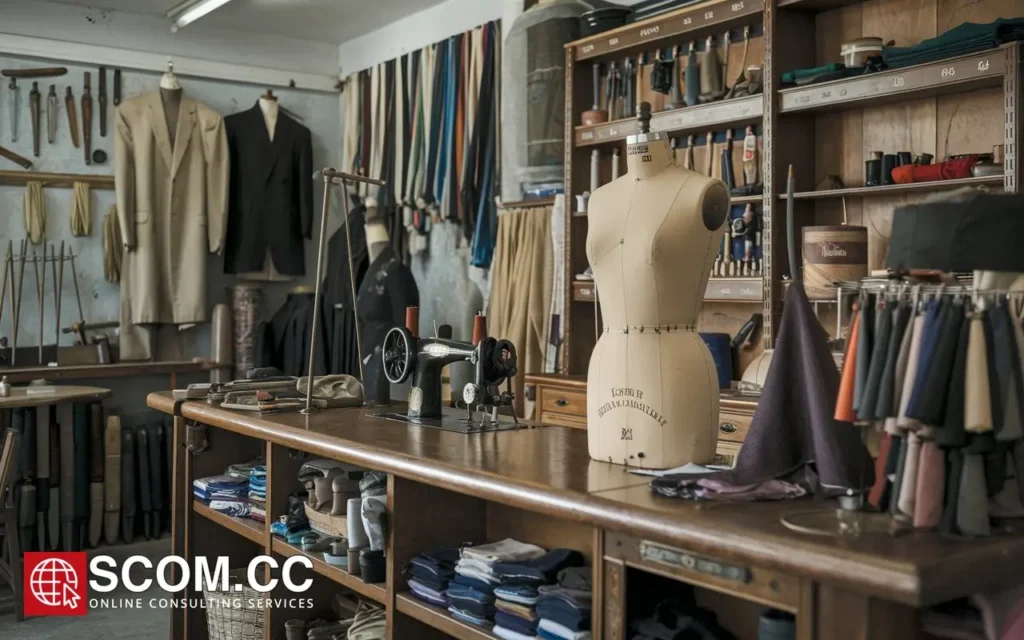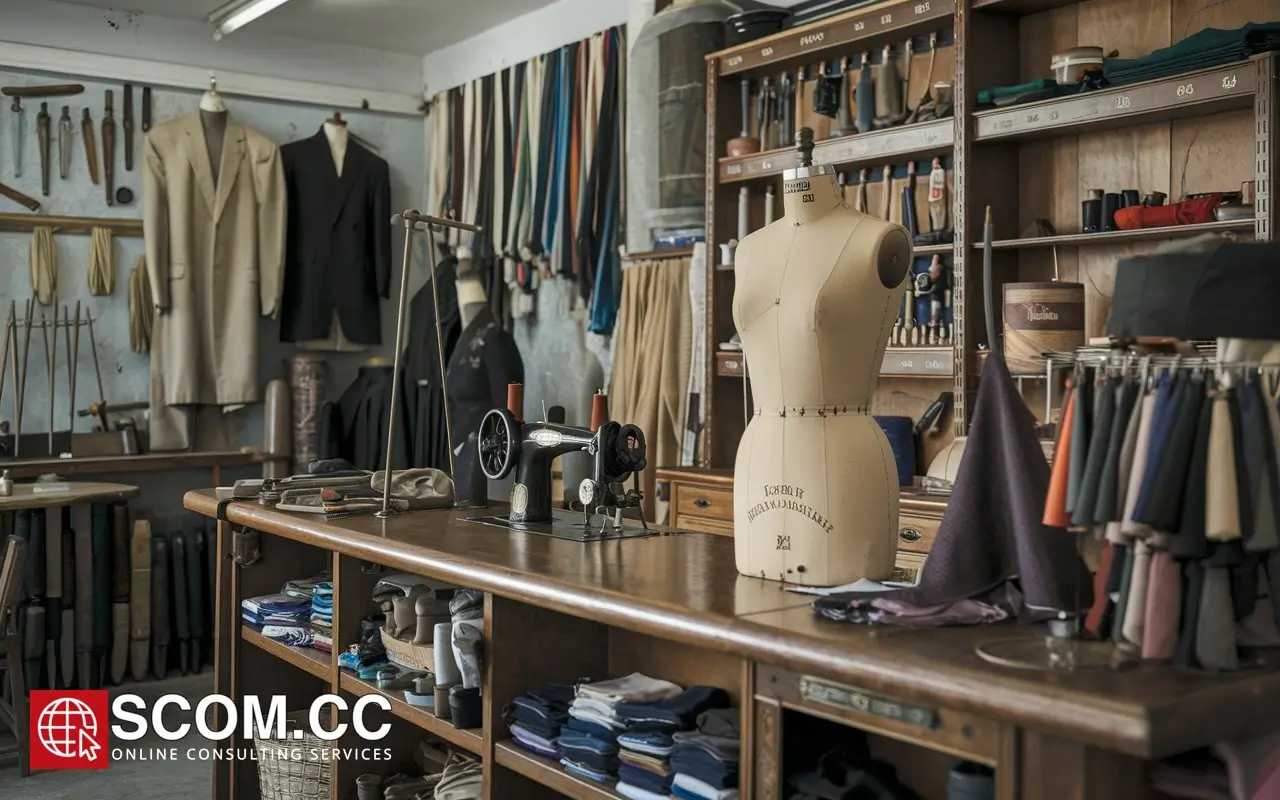What Are the Key Historical Developments in Tailoring Tools and Equipment?

- What Are the Key Historical Developments in Tailoring Tools and Equipment?
- Early Tailoring Tools: Foundations of Craftsmanship
- The Industrial Revolution: A Turning Point in Tailoring Tools
- 20th Century Innovations: Precision and Efficiency
- 21st Century: Digital and Sustainable Tailoring Tools
- Conclusion: The Future of Tailoring Tools
-
FAQ
- 1. What were the earliest tools used in tailoring?
- 2. How did the Industrial Revolution impact tailoring tools?
- 3. What role did the sewing machine play in tailoring history?
- 4. How did 20th-century innovations change the tailoring industry?
- 5. What are some modern tools used in tailoring today?
- 6. How has sustainability influenced tailoring tools?
- 7. What future developments can be expected in tailoring tools?
What Are the Key Historical Developments in Tailoring Tools and Equipment?
Introduction: The Evolution of Tailoring Tools
Tailoring, as an art form and a craft, has always been deeply intertwined with the tools and equipment used by tailors. From the rudimentary implements of the early days to the sophisticated machinery of modern times, tailoring tools have evolved to meet the changing demands of fashion and garment construction. This article explores the key historical developments in tailoring tools and equipment, highlighting how innovations have shaped the craft over centuries.
Early Tailoring Tools: Foundations of Craftsmanship
Scissors and Shears
One of the most essential tools in tailoring is the scissors or shears. In the early days of tailoring, rudimentary scissors made from iron were used to cut fabrics. By the 18th century, steel shears became more common, offering better precision and durability. These early shears were typically large, with a blunt tip, designed to cut through heavy fabrics like wool and canvas.
Needles and Thimbles
Needles have been fundamental to tailoring since its inception. Early needles were made from bone or wood, but by the 18th century, metal needles became the standard. The development of fine steel needles in the 19th century greatly improved the ease and accuracy of hand-stitching. Alongside needles, the thimble emerged as a crucial tool for protecting tailors' fingers during hand-sewing, with metal thimbles becoming popular during the 18th and 19th centuries.
Measuring Tools
Early tailors relied on simple measuring sticks or cords to ensure proper garment sizing. However, the introduction of the tape measure in the 19th century revolutionized the accuracy of measurements. The tape measure allowed for more precise and consistent measurements, which was essential for the growing demand for bespoke tailoring and ready-to-wear garments.
The Industrial Revolution: A Turning Point in Tailoring Tools
The Sewing Machine
The sewing machine stands as one of the most significant inventions in tailoring history. While early attempts at mechanical sewing devices date back to the late 18th century, it wasn't until the mid-19th century that the sewing machine became commercially viable. Elias Howe and Isaac Singer are credited with creating the first successful sewing machines, which drastically reduced the time and labor required for stitching garments.
Impact on Tailoring: The sewing machine enabled mass production of clothing and allowed tailors to focus on more intricate tasks. It also led to the rise of ready-to-wear clothing, which democratized fashion by making well-tailored garments more accessible to the general public.
Pressing Equipment
Pressing is a critical step in tailoring, ensuring crisp seams and sharp lines in finished garments. The flat iron, heated on a stove or fire, was the primary pressing tool until the late 19th century. With the advent of electricity, the electric iron emerged, providing consistent heat and making pressing more efficient. The introduction of the steam iron in the 20th century further enhanced this process by allowing tailors to smooth out fabrics without the need for excessive pressure.
20th Century Innovations: Precision and Efficiency
Cutting Tools
The 20th century saw significant advancements in cutting tools for tailoring. Electric fabric cutters replaced traditional shears for many tasks, allowing for faster and more precise cutting of multiple layers of fabric. The development of rotary cutters in the latter half of the century provided tailors with an even more versatile cutting tool, capable of cleanly slicing through various materials with minimal effort.
Pattern-Making Tools
Pattern-making has always been a cornerstone of tailoring, and the tools used for this process have evolved considerably. In the early 20th century, drafting rulers and curves became standard tools for creating accurate patterns. The introduction of pattern-drafting software in the late 20th and early 21st centuries revolutionized the field, allowing for digital precision and easier adjustments.
Sergers and Overlock Machines
While sewing machines handle the primary stitching of garments, the serger or overlock machine was developed to address the finishing of fabric edges. Introduced in the mid-20th century, sergers create a professional, clean edge by trimming and overcasting the fabric simultaneously. This innovation not only improves the durability of garments but also speeds up the finishing process.
21st Century: Digital and Sustainable Tailoring Tools
3D Body Scanners
In the 21st century, technology has taken tailoring to new heights with the advent of 3D body scanners. These devices allow tailors to capture precise body measurements in seconds, leading to perfectly fitted garments. This innovation is particularly beneficial for bespoke tailoring, where accuracy is paramount. Virtual fitting technology, which simulates how garments will look and fit on a client's body, has also become a valuable tool in modern tailoring.
Computer-Aided Design (CAD) Software
Computer-Aided Design (CAD) software has transformed pattern-making and garment design. Tailors can now create, modify, and store patterns digitally, streamlining the production process and reducing the margin for error. CAD software also allows for easy alterations and customizations, making it an indispensable tool for modern tailoring.
Sustainable Tools and Materials
As the fashion industry moves towards sustainability, tailors are adopting eco-friendly tools and materials. Recycled fabrics, biodegradable threads, and low-impact dyes are becoming more prevalent. Additionally, energy-efficient sewing machines and solar-powered irons are being used by environmentally conscious tailors to reduce their carbon footprint.
Conclusion: The Future of Tailoring Tools
The history of tailoring tools is a testament to human ingenuity and the constant pursuit of precision and efficiency. From the simple needles and shears of the past to the advanced digital technologies of today, each innovation has contributed to the evolution of tailoring as both an art and a science. As technology continues to advance and sustainability becomes increasingly important, we can expect future developments in tailoring tools to further enhance the craft, ensuring that it remains relevant and respected for generations to come.
Summary Table: Key Historical Developments in Tailoring Tools and Equipment
| Period | Key Tools/Equipment | Significance |
|---|---|---|
| Early Tailoring | Scissors/Shears, Needles, Thimbles, Measuring Sticks | Basic tools for cutting and sewing fabric, protecting fingers, and measuring. |
| 18th Century | Steel Shears, Metal Needles, Tape Measures | Improved precision in cutting, sewing, and measuring. |
| 19th Century | Sewing Machines, Electric Irons | Revolutionized garment production and pressing, enabled mass production. |
| Early 20th Century | Electric Fabric Cutters, Drafting Rulers/Curves | Enhanced speed and accuracy in fabric cutting and pattern-making. |
| Mid-20th Century | Sergers/Overlock Machines | Improved finishing of garment edges, providing clean, durable seams. |
| Late 20th Century | Pattern-Drafting Software, Rotary Cutters | Allowed for digital precision in pattern-making and versatile cutting tools. |
| 21st Century | 3D Body Scanners, CAD Software, Sustainable Tools | Introduced advanced digital fitting, design technology, and eco-friendly tools. |
FAQ
1. What were the earliest tools used in tailoring?
The earliest tools in tailoring included rudimentary scissors or shears made from iron, bone or wooden needles, thimbles for finger protection, and simple measuring sticks or cords for garment sizing.
2. How did the Industrial Revolution impact tailoring tools?
The Industrial Revolution brought about significant changes, most notably with the introduction of the sewing machine, which drastically reduced the time and labor needed for garment production. Additionally, advancements like the electric iron improved the efficiency of pressing fabrics.
3. What role did the sewing machine play in tailoring history?
The sewing machine was a game-changer in tailoring, allowing for quicker and more precise stitching. It also paved the way for ready-to-wear clothing, making tailored garments more accessible to the broader public.
4. How did 20th-century innovations change the tailoring industry?
The 20th century saw the development of electric fabric cutters, sergers, and pattern-making tools, which increased precision and efficiency. Pattern-drafting software and rotary cutters became essential tools for modern tailors.
5. What are some modern tools used in tailoring today?
Modern tailoring tools include 3D body scanners for precise measurements, CAD software for digital pattern-making, and sustainable tools like recycled fabrics, energy-efficient machines, and biodegradable threads.
6. How has sustainability influenced tailoring tools?
With a growing focus on sustainability, tailors are now using eco-friendly materials like recycled fabrics, biodegradable threads, and low-impact dyes. Additionally, energy-efficient sewing machines and solar-powered irons are becoming more common.
7. What future developments can be expected in tailoring tools?
As technology continues to advance, future developments in tailoring tools are likely to focus on further enhancing precision through digital technologies like AI-driven design software and continuing the shift towards sustainability with eco-friendly innovations.

To explore more about tailoring, visit our Blog of Tailoring. If you have any questions or need assistance, go to our contact page. Additionally, you can find more information about tailoring and consulting at this tailoring and consulting portal.

Leave a Reply